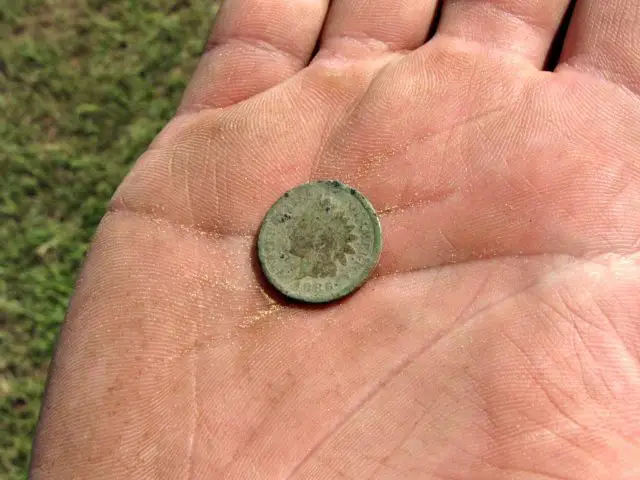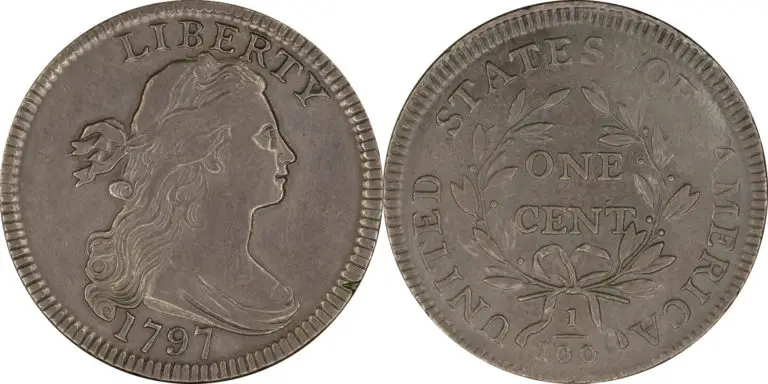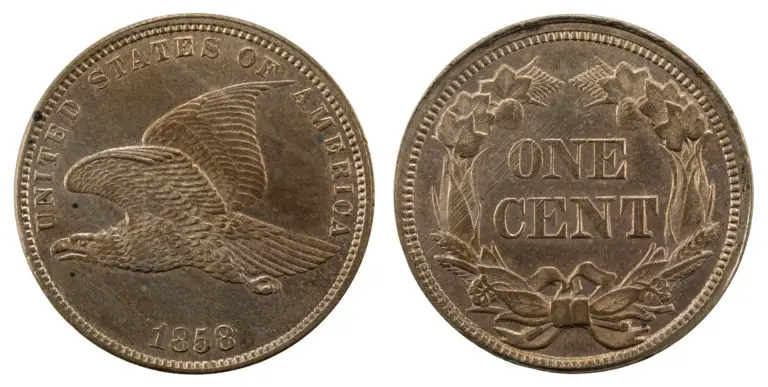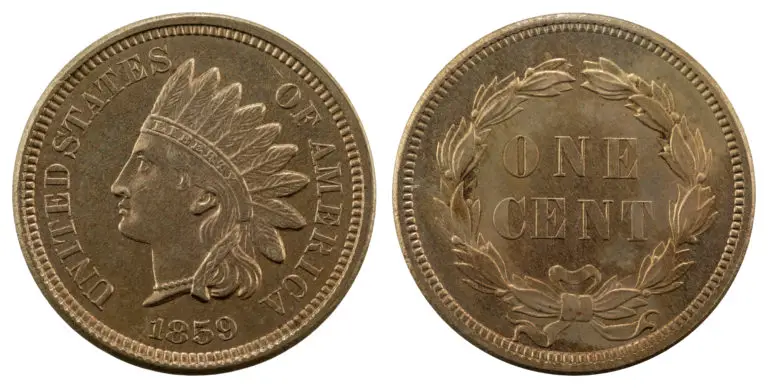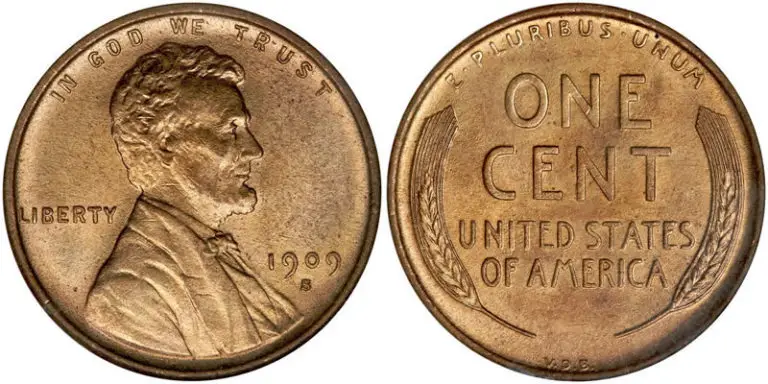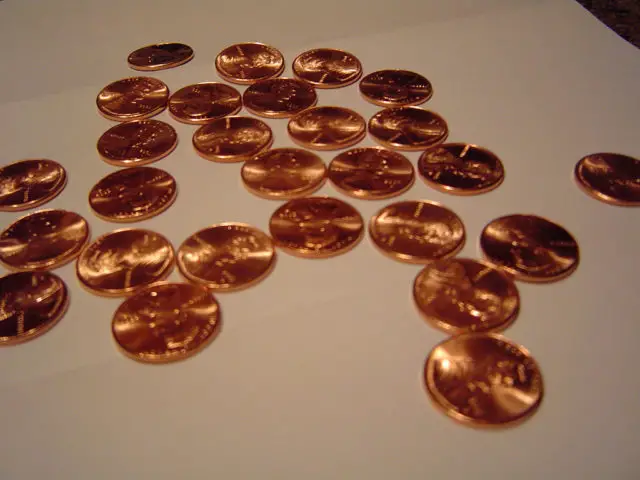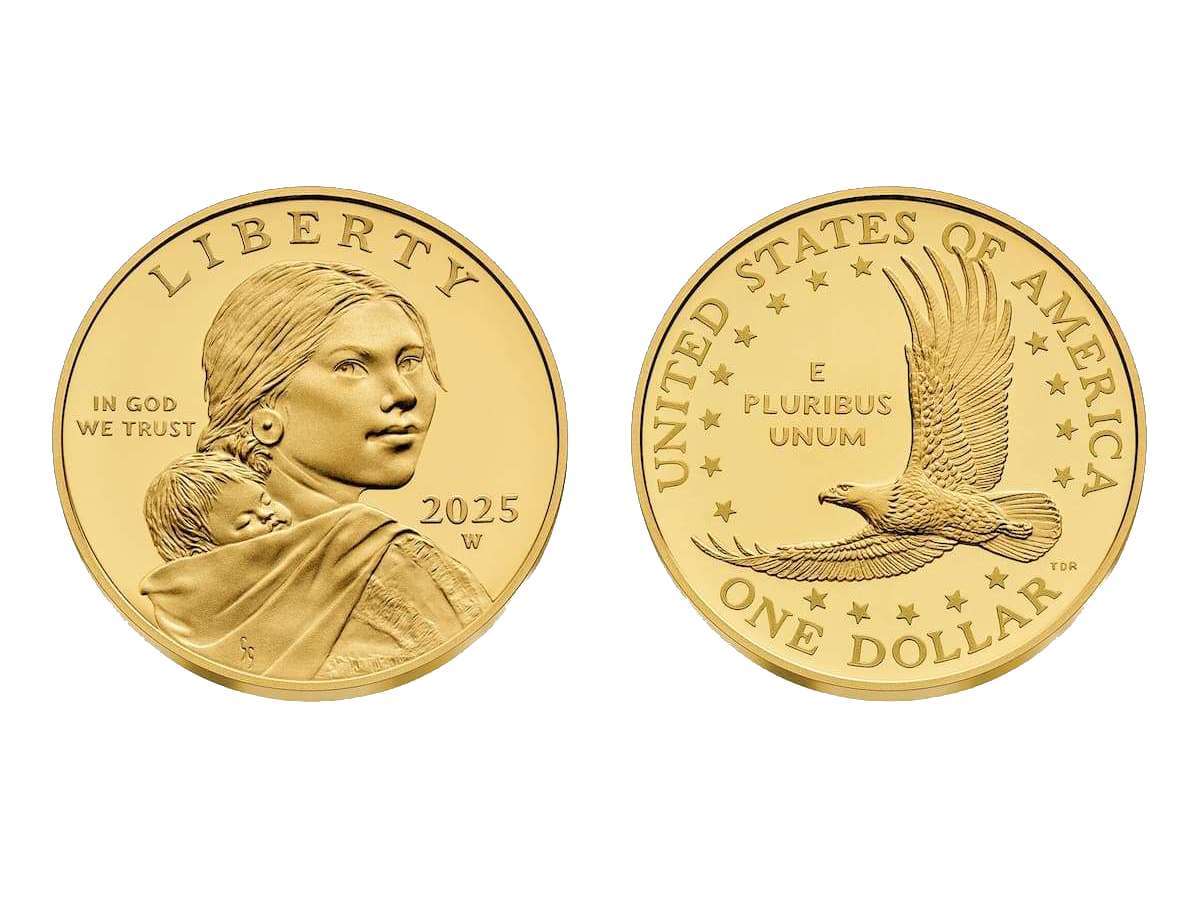Where were you in 1856? OK, consider that a trick question.
But can you tell me where the small penny was in 1856?
If you answer that with “first being minted for mass circulation” — you’d be right!
The U.S. small cent was officially struck for the first time in 1856.
Below, we’ll explore the interesting history of the small penny (3⁄4 inch diameter, or 19.05 mm) and list some of the rare pennies that you’ll want to search your pocket change and coin dealers’ cases for…
Why The U.S. Penny Is Called A Small Cent
We call the pennies of today a small cent because the U.S. Mint also made large cents — which were 1-1⁄8 inch diameter (28.57 mm).
Large cents preceded the smaller one-cent denomination.
The large penny was the first U.S. one-cent denomination coin. It was struck from 1793 to 1857 and had many different designs.
As inflation was making the value of the penny go lower, people were having less tolerance for carrying around so many large cents.
Hence, the end of the large cent and the beginning of a legacy of small pennies that continues to this day.
The Flying Eagle Cent Started It All (1856-1858)
The first small penny to be officially struck for circulation was the 1856 Flying Eagle cent.
The Flying Eagle cent didn’t last long as a design (it was last was struck in 1858) — but it will forever hold the distinction as the first small cent produced in the United States and is a favorite coin among collectors.
Today, due to the coin’s very short, 3-year run, Flying Eagle pennies are often collected along with Indian H
ead cents — which came after the Flying Eagle pennies in 1859.
Flying Eagle cents usually cost around $30 to $50 for a decent, worn specimen. Corroded and damaged examples cost much less.
The Indian Head Penny Came Next (1859-1909)
In 1859, the small penny began a 50-year journey with the Indian Head cent.
It’s safe to say that the Indian Head cent has grown to enjoy a near-legendary status in American lore. Nearly everybody knows of the Indian Head cent, and (even more importantly for the series) nearly everyone wants to have an example of this coin!
In general, you’d have to have gray hair to remember a time when finding an Indian penny in pocket change was a reasonable possibility.
While the last Indian Head penny was minted in 1909, it was still a fairly common occurrence to spot Indian cents in circulation right into the 1950s and 1960s.
Today, finding an Indian Head penny is a rare and novel find in circulation (though some still do turn up), so most people looking for an example of their own have to turn to coin dealers to buy one.
Even still, an Indian Head cent is not, in and of itself, a rare coin. Many were made by the millions. Worn specimens can be bought for under $5.
Then Began The Many Versions Of Lincoln Cents (1909-Present)
And now we come to the Lincoln cent — the longest running obverse design in United States coinage history.
First minted in 1909, the Lincoln cent has grown to become an icon all its own. People around the world recognize the Lincoln penny, and nearly everyone alive in this nation today was born during the series’ run.
When the first Lincoln cents were struck by the United States Mint, millions of Americans applauded the coin commemorating a man who kept our nation whole during the Civil War and proclaimed the freedom of millions of slaves before being assassinated in 1865.
Yet, for all the public admiration of the new Lincoln penny, there was also some public discourse over the coin. Primarily, outcry came from those jeering the prominent display of designer Victor David Brenner’s initials — VDB — on the reverse (tails side) of the coin.
The U.S. Mint quickly removed the initials before restoring them elsewhere on the coin in 1918. Today, you can still see a tiny inscription of VDB just under Lincoln’s shoulder. The 2 wheat stalks remained on the coin’s reverse until 1958.
The Lincoln penny has seen other changes over the years:
- In 1943, the Lincoln cent was produced in steel to help ration copper for the war effort.
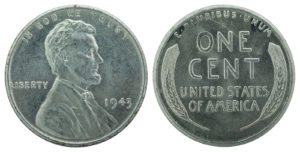
- In 1959, the coin’s original reverse design (2 wheat ears) was replaced with an image of the Lincoln Memorial.
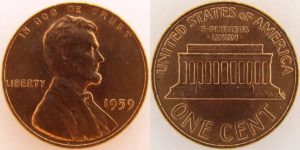
- In 1982, the composition of the Lincoln penny was changed from primarily copper to mostly zinc, with a thin outer copper plating.
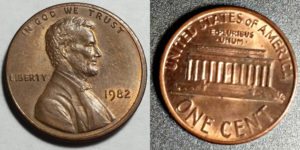
- In 2009, in honor of the 200th anniversary of Abraham Lincoln’s birth, Lincoln Bicentennial pennies were released into circulation with 4 different reverse designs showing scenes of Abraham Lincoln throughout his personal and professional life. This was the first year since 1958 (when wheat pennies ended) that the reverse of the coin did not have a design of the Lincoln Memorial on it.
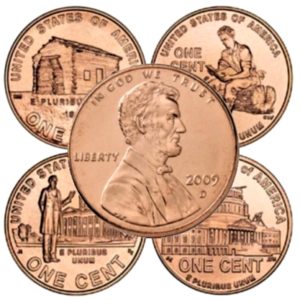
- In 2010, the reverse design on the Lincoln penny was changed to a shield. The shield represents President Lincoln’s ability to maintain the Union even during the Civil War — which threatened to rip our nation in two.
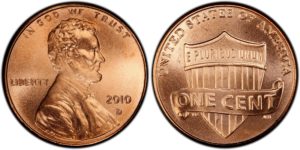
Future Of The U.S. Penny
It’s pretty hard to imagine the world without the Lincoln cent.
Of course, pennies also have their naysayers — and some people would like it gone.
Why? For these reasons:
- It costs nearly 2 cents to make a penny (the cost fluctuates each year).
- Many pennies never make it past 1 or 2 transactions — since so many are squirreled away and spend most of their lives in jars, bags, boxes, and piggy banks.
- Too many Lincoln cents are discarded or destroyed — because they make great subjects for cheap science experiments.
- They aren’t worth enough (in some people’s eyes) to save.
- Some think they are simply a nuisance.
The Lincoln cent has seen its glory days. Once capable of singlehandedly buying candy, getting people into arcades and parlors, and serving as token payment for any number of trinkets and treats, the U.S. penny today is snubbed by many.
Yet, despite frequently being discarded in the trash, considered unworthy of being picked up off the sidewalk, and disregarded as monetarily worthless by scores of people, the Lincoln cent still manages to live another day!
Having survived numerous attempts of elimination from the American monetary system, the Lincoln penny continues to face threats — due to rising production costs.
And despite the fact that many Americans have been railing against the one-cent coin for years, (and some lawmakers have been very interested in trying to eliminate the U.S. penny altogether), what politician, group, or administration really wants to be responsible for removing from our nation’s economy an historically beloved coin that is produced by the billions each year and continues to honor a man widely considered to be the greatest president ever to serve our nation?!
While it’s anyone’s guess as to how much longer the U.S. penny has a life as a circulating coin, the significance of this iconic coin is unquestionable — and the love and gratitude our nation has for the man depicted on the coin is undying.
A penny saved is a penny earned
— Benjamin Franklin
 Who knows?… Perhaps the steel penny will return!
Who knows?… Perhaps the steel penny will return!
After being made in 1943, steel pennies may again appear in your pocket change — because there is a lot of concern over how much the U.S. government is spending to make copper-coated zinc pennies.
It costs more to make a penny than the coin is actually worth!
This is leading some officials to call for a new steel penny with copper coating to reduce the cost of making the one cent coin.
NOTE: Talk of changes to the nickel (made mostly of copper) is also abuzz.
A List Of Rare Small Cent Pennies
Many pennies are worth far more than a single cent. In fact, there are several that will bring you hundreds of dollars… or more!
This list isn’t inclusive of all the scarce pennies, but it’s a good look at the most valuable and rare pennies that coin collectors search for:
- 1856 — $6,500
- 1877 — $800
- 1888/7 — $2,600
- 1909-S (Indian Head) — $475
- 1909-S VDB (Lincoln) — $750
- 1909-S (Lincoln) — $100
- 1914-D — $225
- 1922 plain — $700
- 1931-S — $100
- 1943 copper (Extremely Fine) — $50,000 to $100,000
- 1944 steel (Mint State) — $100,000
- 1955 doubled die — $950
- 1969-S doubled die (Mint State) — $50,000
*Values are for coins in Good-4 grade unless otherwise indicated.

